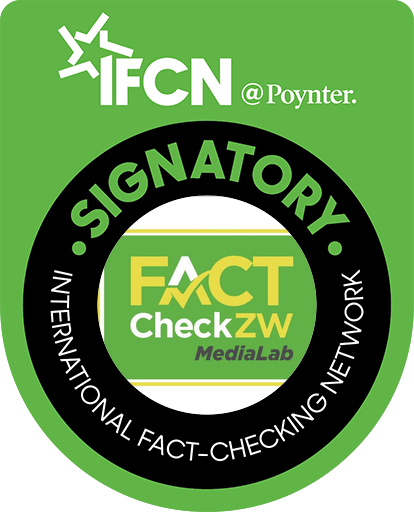CLAIM: According to the latest statistics, a staggering 72% of paternity tests conducted have returned negative results, meaning that in most cases, presumed fathers are not biologically related to the children they are raising.
SOURCE: Media reports citing Global DNA Zimbabwe
VERDICT: Misleading
Paternity fraud has become a hot issue in Zimbabwe in recent times, especiaĺy with shows like Tinashe Mugabe’s DNA show.
Recently, an online paper, Health Times published an article headlined, ‘Shocking Paternity Test Statistics Reveal Most Fathers Are Raising Non-Biological Children’.
As expected, it got a lot of traction on social media platforms here and here.
The story was also carried by other news outlets with claims that ‘Recent data from Global DNA Zimbabwe shows that 72% of paternity tests in the country have shown that the presumed fathers are not the biological parents. This means most men are unknowingly raising children who are not their own’.
It’s not the first time that these kind of statistics have made it to the public domain.
Similar stories have appeared before here and here.
Sampling
The biggest challenge with these stories is the source of the data. The data comes from DNA testing companies where tests are mostly from maintenance cases or low paternity confidence men.
This means that this is a non representative sample. Those who go for these tests are either already disputing paternity or are doing the tests for ‘peace of mind’.
In the recent claim, the data is sourced from Global DNA Zimbabwe, a private company that offers paternity testing services, among others.
A representative from the company is quoted saying, ‘Most people do DNA tests to confirm the paternity of their alleged children. This usually stems from suspicions of infidelity, particularly on the part of women, leading the alleged fathers to seek confirmation. These tests provide peace of mind to those involved.’
This shows that their statistics are not from a representative sample but from the low paternity confidence group, which skews the result.
Not only in Zimbabwe
Paternity fraud statistics are not only skewed in Zimbabwe but throughout the world.
Though an oft-repeated zombie statistic posits that as many as 10% of children are fathered outside of marriage, studies show that over the past 500 years, the rate in Europe is much closer to 1%.
In Sweden, a study was carried out on paternity fraud. Nearly two million mother-father-offspring family units were included. Overall, the frequency of misattributed paternity was estimated at 1.7% in both models.
Misattributed paternity was more common among parents with low educational levels, and has decreased over time to a current 1%.
Zimbabwe study
In Zimbabwe an independent study, outside DNA testing companies, was carried out with 851 DNA test results cases spanning the 2014-2019 period. The involved
fathers belonged to the low paternity confidence group since they all sought to determine if they were the fathers to the children in question.
According to experts classification, paternity test results can be categorised as high paternity confidence (man who have no reason to doubt their fatherhood) and
low paternity confidence group (these include man who are sufficiently doubtful that they seek paternity to determine if they are the fathers of their children).
The cases were also classified as ‘peace of mind‘ tests if they were requested based on the concerned parties‘ need to know but outside the legal dispute or
requirement. The second group was that of court disputed paternity, where the concerned parties where ordered by the civil court to have a paternity test done.
For the peace-of-mind tests, participation of the mother was voluntary and man were not required to bring involved women as long as they could prove
guardianship over the child. As a result, this group had a mixture of duo (child and presumed father) and trio (child, mother and presumed father).
The court cases however required the man, the woman and the disputed child to participate in the test, hence such cases always being trio. The concerned parties (including the child if over 18 years) underwent a 15-20
minutes pre-test counselling session during which they were made aware of the technical aspect of the test and potential implication of the results.
If still determined to undergo the test, they would sign their consent. Tested parties also underwent post-test counselling session of 20-30 minutes during which
results were disclosed and further explained.
Results of the Zimbabwean Study
The scientific study found that the average paternity discrepancy was 32.8 %. According to the researchers, these findings point to likely similar paternity discrepancy trends in Zimbabwe compared to other parts of the world where PD is high among those seeking to ascertain
the paternity of their supposed children – the low paternity confidence group.
The level of paternity discrepancy in high paternity confidence group (i.e. the general population with no reason to doubt the paternity of their children) still needs to be investigated and compared to the observed 1-3% in other world populations.
Interestingly, the results also indicate that of the total tests conducted 66.22 % were male children whilst female children made up for only 33.78 %, indicating a stronger interest by social fathers in ascertaining paternity of male children as compared to female children.
Conclusion
Though it has found a lot of traction over the years, the claim that ‘a staggering 72% of paternity tests conducted have returned negative results, meaning that in most cases, presumed fathers are not biologically related to the children they are raising’ is misleading. It is also misleading to say this is ‘according to latest statistics’. The statistics being referred to here are from a single DNA testing company. The men being tested are on the low paternity confidence group, that is, already doubting paternity. Global DNA Zimbabwe also does not state how many people were tested to ascertain the sampling size. The only scientific study that has been conducted on paternity discrepancy in the same low confidence group, with a sample size of 851 tests, showed a paternity discrepancy of 32.8%. This is more than 100% less than the ‘statistics’ from Global DNA Zimbabwe. This shows that the data from the claims does not even match the independent data study for the same group of low paternity confidence. No study has been carried out to date on the general population or high paternity confidence men.











